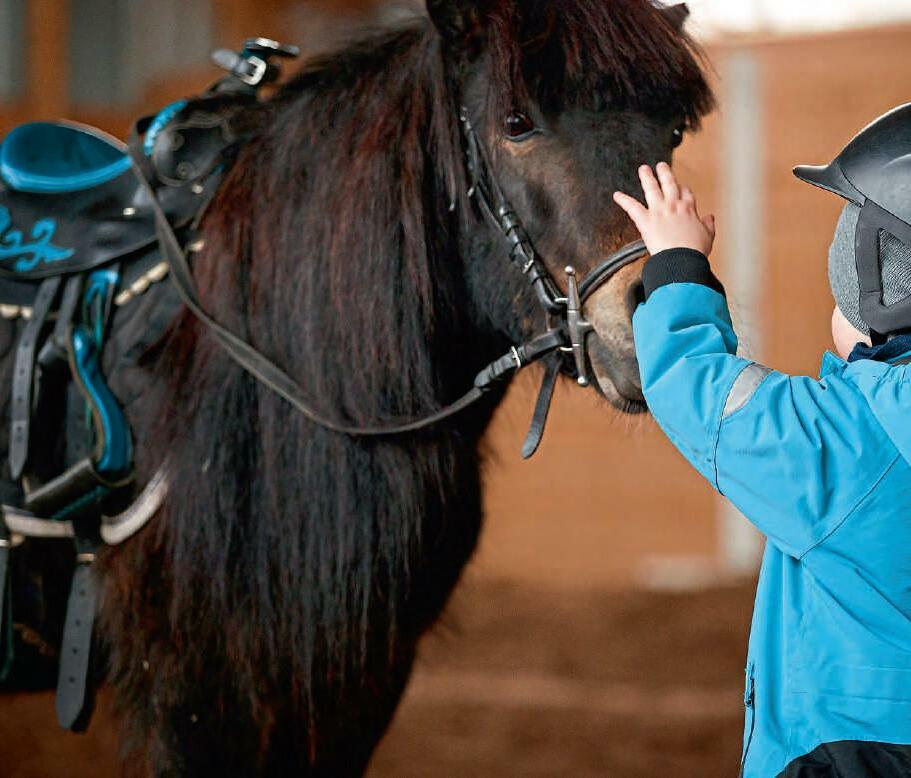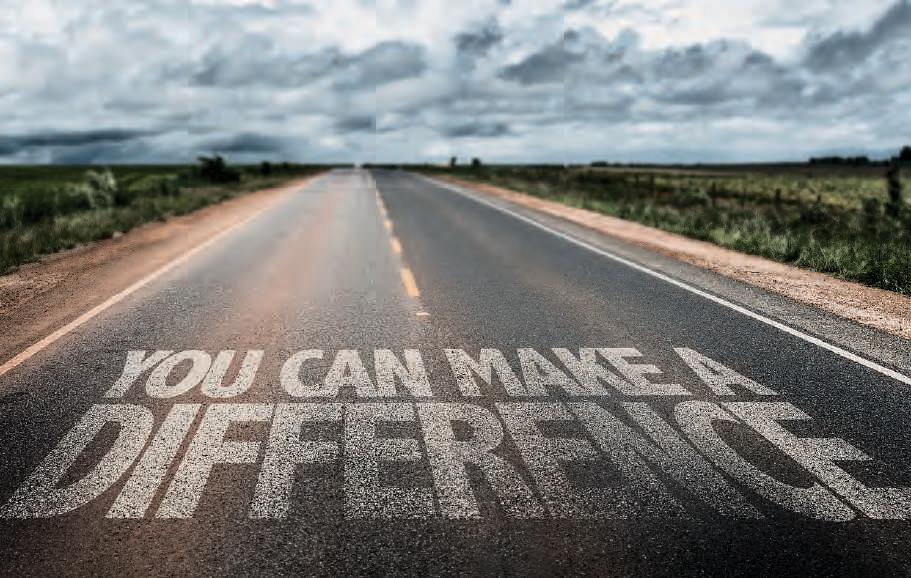
5 minute read
Equine-assisted therapy
32 / FEATURE ➜ SPOTLIGHT
Eq ineassisted therapy:
HOW CAN HORSES HELP CHILDREN AND YOUNG PEOPLE WITH AUTISM?
Amanda Pearson from the Red Horse Foundation outlines the benefits of equineassisted therapy.
he goal of equine assisted T therapy is to help children, adults and families to process and work through their feelings, to develop new ways of thinking, to overcome obstacles and move forwards in their lives. This specialised form of therapy involves working in collaboration with a horse and highly trained therapist. Sessions provide a unique and powerful combination of psychotherapy, groundbased exercises and mindfulness.
Equine therapy can be an effective method of helping people struggling with trauma, grief and loss, in particular children and adults with mental health problems and children and young people with SEN and disabilities, including autism, ADHD and behavioural difficulties. To deliver sessions in our area, we formed strong partnerships with local statutory agencies, schools and community and voluntary organisations including The Looked After and Leaving Care Team, CAMHS, Targeted Youth Services, Early Help and Safeguarding Team and Probation services.
WHY HORSES?
No matter their background or experience – clients respond to horses. The unique qualities of the horse speed up emotional breakthroughs.
As highly intelligent herd and prey animals, horses have evolved to be responsive to each other’s needs for their own survival, and the survival of the herd. They are highly attuned and offer clients safe reflection and compelling feedback when combined with a skilled facilitator, helping clients understand their own internal processes more readily than hours of talk. Equine therapy also offers the opportunity to spend time with horses in a fun and light-hearted way if needed. There is no pressure, no ‘right’ or ‘wrong’ and no previous experience is required.
Studies have identified that children with autism engaging in therapeutic horse riding receive both immediate and long-term benefits. Evidence shows that direct contact with horses has many lasting benefits, and we expect children will show improvement in self-esteem and confidence, reduced irritability, reduced hyperactivity, improved social skills and improved word fluency.
Research also indicates that the quality of social networks, within and between
BIO
communities, is positively related
Studies have identified to the overall well-being of marginalised young people. that children with autism Social networks facilitate engaging in therapeutic horse riding receive emotional support and reduce feelings of isolation and depression. Our ‘Horsing both immediate and Around’ groups for autistic long-term benefits. children and their primary carer encourage social inclusion, improve empathy skills and provide tools to aid emotional resilience.
A M A N D A P E A R S O N
Amanda is the centre manager and codirector of the Red
Horse Foundation.
Amanda spent many years working in health and education organisations and she now manages the day-to-day running of the foundation, supporting all clients, staff and horses with the daily routine. The Red
Horse Foundation is a non-profit organisation with a team of mental health professionals, supporting people of all walks of life, struggling with mental health issues, in Gloucestershire and beyond. To find out more, visit
www.redhorsefoundation.org
WHAT IS TO BE GAINED?
In 2019, in the first large-scale, randomised study of its kind, researchers at the University of Colorado Anschutz Medical Campus found that therapeutic horse riding led to a lasting reduction in irritability among children with autism, along with other positive social and communication impacts. The study’s principal investigator and lead author Robin Gabriels, PsyD, professor of psychiatry at the University of Colorado School of Medicine said: “There is growing evidence that human-animal interventions can improve emotional health and social wellness in youth, particularly those with autism spectrum disorder. Our study was rigorous and the findings remarkable.”
The study was the first to show that taking part in equine-assisted therapy resulted in significant improvements in irritability, hyperactivity, social skills, and word fluency compared to a barn activity control group that met at a riding centre to learn about horses, but had no direct interaction with them.
Meanwhile, research published by the University of Edinburgh in 2018 found that those taking part in equine-assisted therapy felt that horses ‘open up’ autistic children and made possible interactions that seemed impossible before. Respondents in the study regarded horses as facilitating the emergence of social behaviours, including eye contact, pointing, and speech. In the study, three key explanations emerged for therapeutic success: the sensorial, embodied experience of riding the horse; the specific movements and rhythms of the horse; and the ‘personality’ of the horse.
The Autism Spectrum Disorder Foundation (ASDF) also outlined the benefits of equineassisted therapy for children with autism: “Rather than verbal communication, autistic children experience physical communication with the horses. They brush them, hug them, and pat them. By learning to care for the horse, they associate the care they provide with feelings and an emotional bridge is constructed. This bond can lead to social and communication skill production with other people in [their lives] as well.”

W H AT CO M E S N E X T ?
Our own experience of this therapeutic model over the past 11 years showed us that equine-assisted therapy can help with increasing emotional resilience and equipping the participant to find real-life solutions to the challenges that they are living with.
We are in the middle of a fully funded programme that offers free sessions to children aged 7-12 years with autism; ultimately, the goal is for young people to develop self-esteem, confidence and a sense of acceptance. During a session, participants develop a relationship with one of our horses, acquiring skills they can transfer to their human interactions. Undertaking this type of therapy in the outdoors while working with gentle herd animals in a supportive environment is rewarding not just for the children and the horses but the therapists too.










